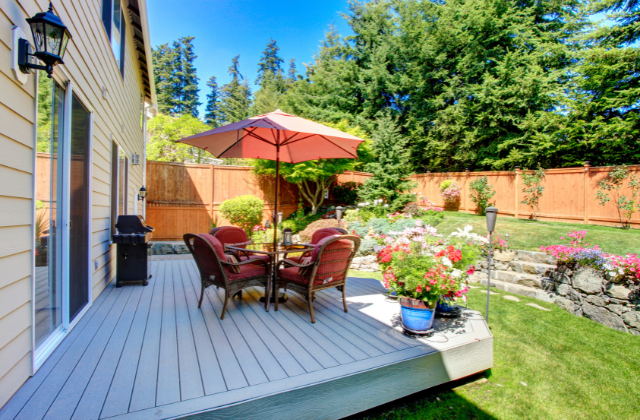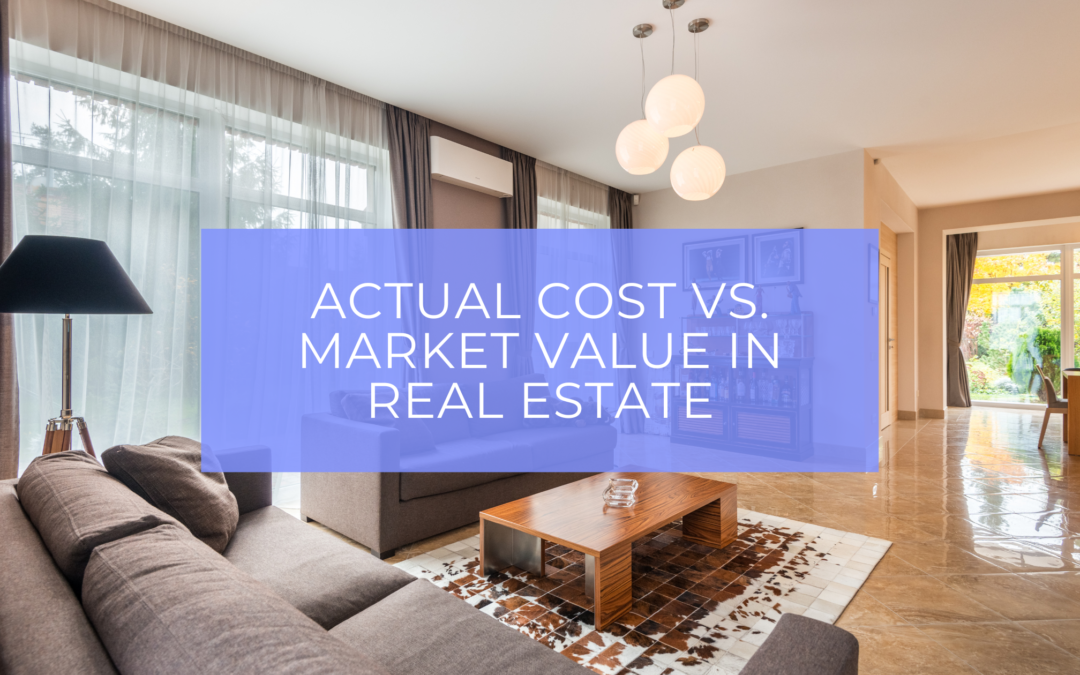Knowing the difference between ‘actual cost’ and ‘market value’ is crucial for both homeowners and potential buyers. Often used interchangeably, these terms hold different implications in the context of home improvements and pricing a house to list for sale. When selling your home, it is essential to look at work you’ve completed objectively from the eyes of the market.
Actual Cost in Real Estate
The ‘actual cost’ refers to the direct financial cost involved in purchasing, improving, or maintaining a feature of a property. Let’s use a deck as an example. If your deck needs replacing due to age and structural condition, a new deck to a house might cost around $20,000. This figure represents the actual cost incurred by the homeowner to replace an existing structure or build a new deck where one didn’t exist. The cost to the homeowner who purchased a new deck is $20,000.

Market Value and Its Dynamics
On the other hand, ‘market value’ is the estimated amount that a property would fetch on the open market under current conditions. When a professional appraiser or real estate agent determines value, they look at market value. Various factors, including location, property size, general economic conditions, and comparable sales, influence market value. Unlike actual cost, market value is dynamic and fluctuates over time.
Often, when looking at comparables, adjustments are made. For example, a bedroom may add $15,000 of value. So, if a house recently sold with three bedrooms and your home is otherwise exactly the same but has four bedrooms, its market value would be approximately $15,000 more than the recently sold property. This does not mean that the actual cost of adding a bedroom is $15,000; it means that based on sales history in the neighbourhood, the difference in sales price varies by approximately $15,000 per bedroom in similar properties.
Let’s look at some more examples:
Numbers and values in this blog post are for illustration only and do not necessarily reflect the market value or actual cost of the examples.
The Deck Example: Cost vs. Value
Let’s go back to the deck example. While the actual cost of building the deck is $20,000, its contribution to the home’s market value is more complex. In fact, it may not significantly increase the market value at all despite the initial investment. This discrepancy arises because buyers may value the addition less than the cost to build it, or it is a standard feature on comparable homes, especially if it has aged or does not align with current trends.
However, a rotting and unsafe deck may detract value from a home in a balanced or buyers’ market with more inventory than homebuyers. The amount of negative value is often determined by actual cost as it requires maintenance or replacement, and the neighbour’s house that is also for sale has a deck in excellent condition. Typically, actual cost is only reflected in home value when something is in poor shape and needs to be replaced or renovated by the new buyer.
The Impact of Kitchen Renovations
Kitchen renovations often demonstrate the opposite scenario. A kitchen remodel costing $35,000, including new appliances, may add $50,000 to the property’s market value. Kitchen and bathroom renovations are often the most profitable updates for homeowners who plan to sell their properties. This enhancement in market value is attributed to the high demand for modern, functional kitchens and turn-key living among homebuyers. Kitchens are central to a home’s appeal, and a well-executed renovation can significantly boost a property’s attractiveness in the market, leading to a lot more money than the actual cost of the renovation going back into the homeowner’s pocket when they sell their home.

What does this mean for homeowners?
For homeowners in the Quinte area and Prince Edward County, these distinctions are vital when planning home improvements. It’s essential to consider not just the actual cost but also the potential impact on market value. Some renovations, like kitchen upgrades, are more likely to increase market value, while others might not offer the same return on investment.
While the actual cost and market value are related, they don’t always move in tandem. Homeowners should carefully evaluate the potential return on investment when planning any home improvement. We recommend consulting with a real estate professional to understand the specific dynamics of your local market. The Quinte Living™ team is always here to provide insights and guidance tailored to the Quinte area and Prince Edward County’s unique real estate landscape.
Stay in the loop!
We promise not to spam your inbox. 😊
Receive a once-a-month email with a real estate market update for the Quinte area and Prince Edward County, helpful tips for homeowners and buyers, and community insights like events and municipal decisions that impact property. Though, our readers tell us the best part is Puppy of the Month.
